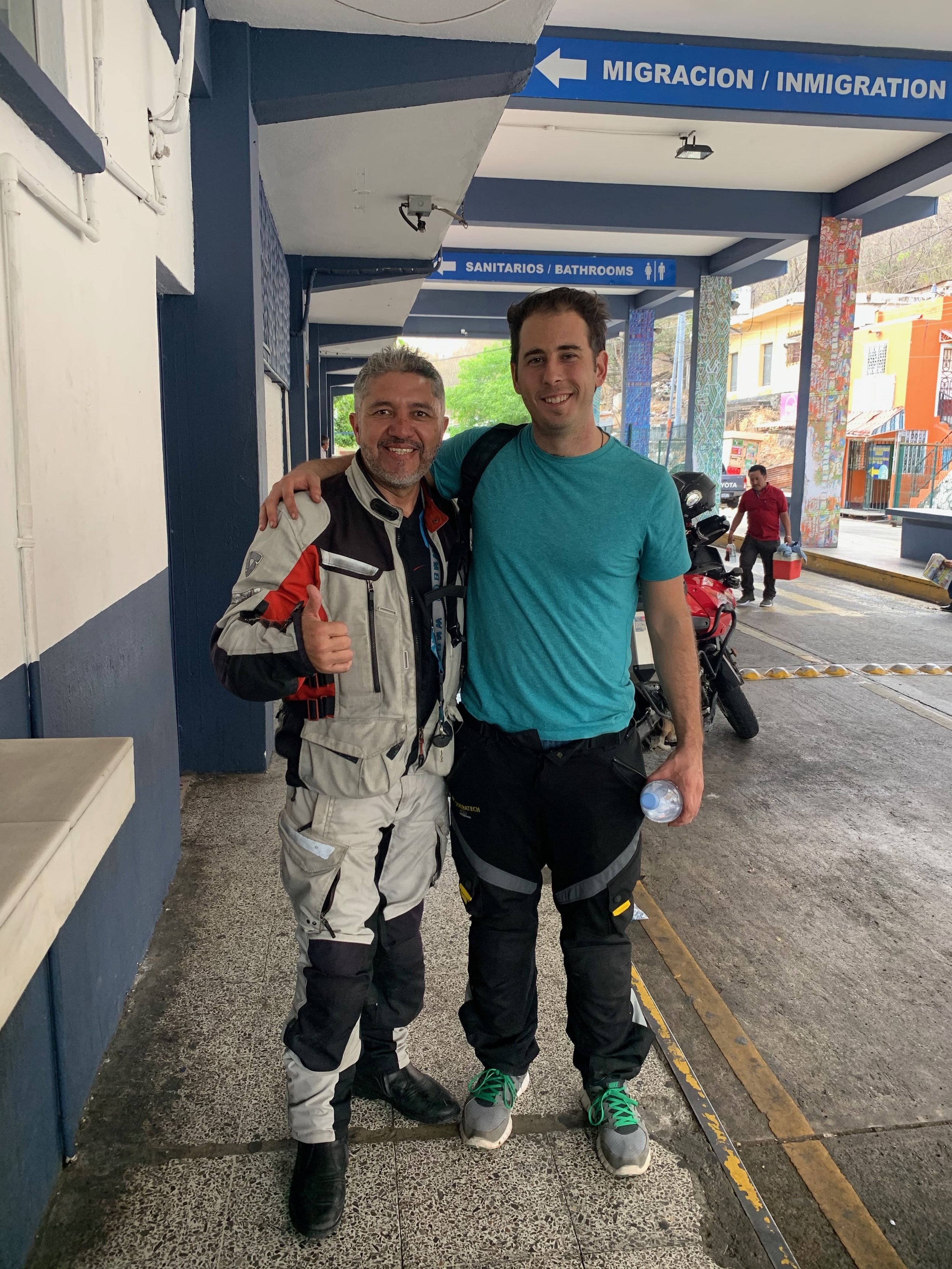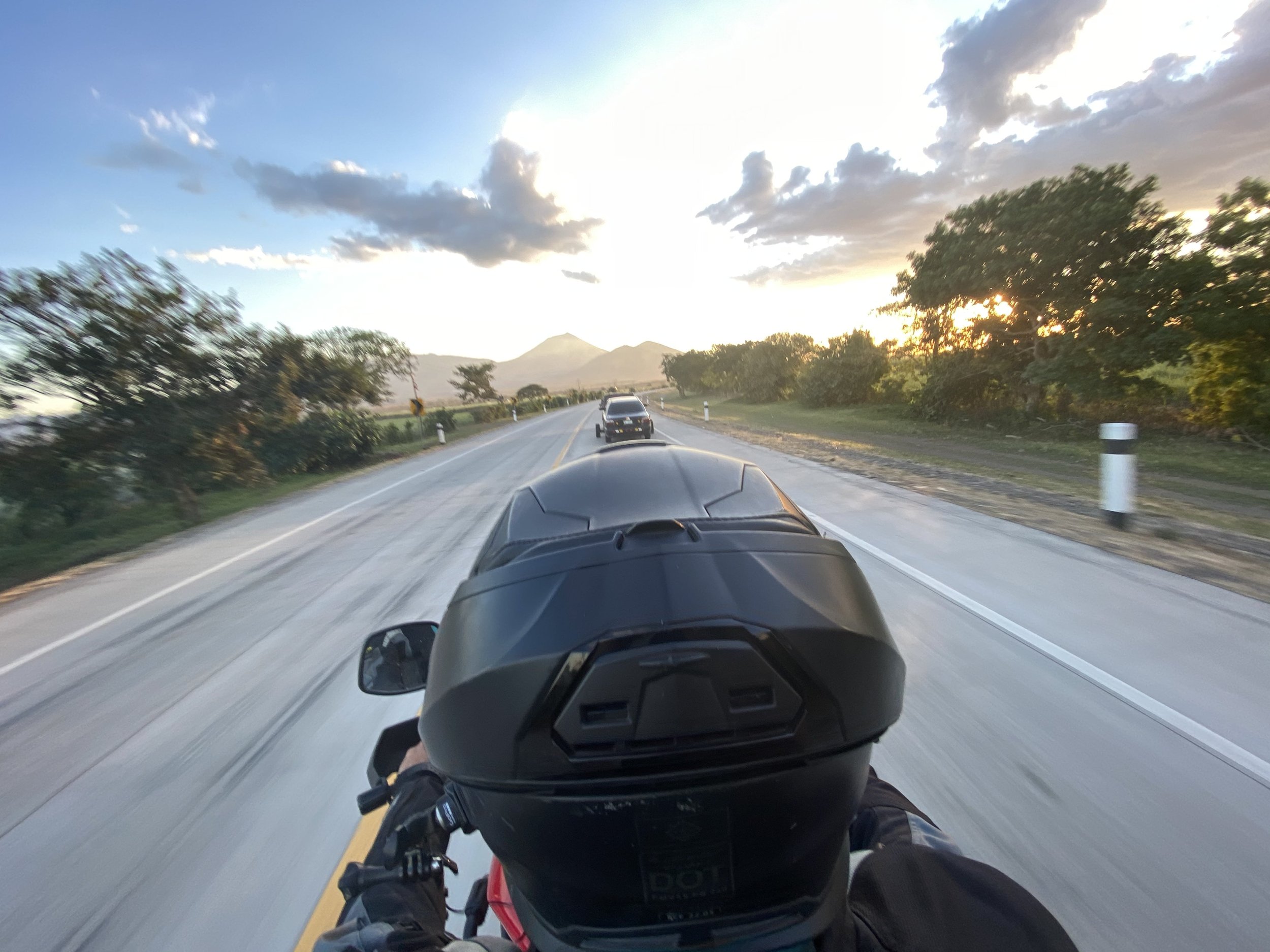Crossing Latin American Borders With Your Vehicle: An In-Depth Guide
No matter how many borders you have crossed, each new one staring you in the face is always a bit stressful. They can determine in a big way if you continue your journey or not! In this guide, I'm going to share with you how to be fully prepared for each border crossing through Latin America, and things you can even avoid along the way.
Vocabulary:
Let's start with the basics. I'm going to share some vocabulary with you that is relevant for each border going through Latin America. Regardless of your Spanish speaking abilities, these words will help you out greatly when it is time to go office hunting:
Aduana: The Customs Office where you will complete paperwork for your vehicle.
Migracion: Immigration Office where you will complete passport stamps and visas for yourself.
Permiso: The permit for your vehicle to be legally imported into the country.
Seguro: Vehicle Insurance
Titlo: Vehicle's Original Title
Registro: Vehicle's Current Registration in your home country
Firma: Your Signature
Multa: A fee you must pay if you stay past your vehicle's permission date.
Rule #1: Refuse the helpers
Unless you are planning on spending a whole lot of money for no reason, the people offering to help you at each border are unnecessary. Their fear tactics will work on you unless you know all the steps before-hand. They are good at what they do, and will take absurd amounts of money from you slowly during the process.
These helpers will be persistent, but I urge you to continually refuse their help. My first experience with these people was entering into Honduras. $160 later, I could have finished everything myself for under $30. It was a lesson learned from me, so you don't have to on your journey.
Rule #2: Fumigation
Most borders require you fumigate your vehicle for any bugs or pests that may be coming along for the ride. The reality is, they just want your money. Most borders give you a fumigation form you must have with you to exit the country.
Get your steps in!
One thing with Latin American border offices? They are stretched all over the place! If you are the type of person who counts your daily steps, worry not my friend. These offices will be sure to give you a good workout!
If that is the case, the real question is: Where to first?
Migracion: Immigration Office
Once you get passed the helpers, and park your vehicle in the lot, it is time to go to immigration services. This office is for your passport stamp, and any other paperwork they need for legally entering the country personally. Each country is a bit different in terms of what they give you, but this part is important. Make sure they stamp your passport during each entrance and exit. There will be zero possibility of a problem moving forward if you have stamped documentation of when you entered and exited each country.
A word to the wise about some of these countries: The officials will sometimes try to get you to believe you did not fill out paperwork in advance, and therefore cannot enter the country. This happened to me in Nicaragua, and I simply told them my friends passed through a few days ago and never ran into this type of issue. I'm not really sure why they do things like this, but they do happen occasionally. Do not give into any intimidation, and remain patient and calm.
A word to the wise about some of these countries: The officials will sometimes try to get you to believe you did not fill out paperwork in advance, and therefore cannot enter the country. This happened to me in Nicaragua, and I simply told them my friends passed through a few days ago and never ran into this type of issue. I'm not really sure why they do things like this, but they do happen occasionally. Do not give into any intimidation, and remain patient and calm.
Once you have completed the first step of getting yourself to be able to enter, it is time to move onto your vehicle. Next stop? Aduana.
Aduana: Vehicle Customs
Before I tell you anything about these offices, you are going to want to have one thing handy. Lots and lots of copies. The customs office needs copies of these four things, and if you have them ready, you can diminish greatly your step count for the day:
Copy of Title of Ownership
Copy of Registration from your home country
Copy of license (front and back)
Copy of Passport (only photo page)
It is my suggestion you keep these in individual envelopes for each border crossing, ultimately making each crossing much more efficient (something these borders are not the best with).
Most of the forms you must fill out have an English translation next to each box. Even if you don’t speak a lick of Spanish, the forms should be pretty straightforward. Write legibly, and remember the Day/Month/Year format on these forms is a little different than the US (if you are traveling from there).
One more important check on the paperwork they hand back to you! Be sure to triple check the VIN number they have written on your forms. The only time you will run into an issue upon leaving is if this VIN is not correct.
Vehicle Inspection
It is totally normal for the officials to come take a look through your belongings. You obviously want to be there while they do it, but as long as you don’t have anything illegal with you, you’ll be totally fine. They will be checking all over the vehicle’s frame for any funny business, and sometimes ask you to open up any bags you have with you. In my experience, the simple act of opening the bags is enough for them. They won’t really search through them too hard.
Typical Vehicle Allowances
Most countries will give you anywhere from 30-90 days on your permiso (vehicle permit). Remember to always bring your permiso with you at all times. Designated road blocks are all over these countries strictly to check vehicle legality. As long as you have your permiso, license, insurance (depending on country) and passport with you, you should not have any problems.
Extending Your Stay
You are allowed to extend these dates to a maximum of 90 days, and in some countries even 180 days. In order to do this, you must enter an Aduana office at the border, or anywhere else within the country. Many times, these are few and far between, so make sure you have ample time to extend if you need to. Do not wait until the last minute.
What If My Permiso Has Expired?
If your permiso has expired, you will need to pay what is called a multa. A multa is a fine you pay at the border upon exiting the country for having overstayed your visit. Each country is different in terms of severity of the fine. I’ll get into more country specific details later.
It is very important for you, above all else, to make sure your personal visa/passport stamp does not become expired. This can lead to trouble in future border crossings. A little story for you:
I had returned to the United States for a few months while my motorcycle was parked in Guatemala. I realized I had to pay the multa for the motorcycle permit being expired. I ended up getting a discount on the multa, paid it, and continued my journey south. I didn’t think anything of this until I reached Nicaragua. Upon arrival to the immigration office, I was asked if I ever paid a fine for overstaying in a country. My answer was yes. The officer paused for a moment, and I figured I would clarify the multa was for the motorcycle, and not for me. He told me it was a good thing I clarified this to him, because he would not have been able to allow me into the country if the multa if it was for my individual status in any country.
Moral of the story? Keep your passport and visas up to date no matter what. Even if you need to cross the border for a day and come back in, do so.
Country Specific Information
Mexico
Depending on the year of your vehicle, the deposit upon entry is:
Year 2007 and newer: $400
Year 2001-2006: $300
Year 2000 and earlier: $200
Do not worry, there is no fuss about this being returned to you, and will be deposited back to you via the original form of payment (i.e credit card, cash, etc.)
If you are only planning on staying in Baja California, you will not need to pay this. Therefore, they may not tell you about it at the Tijuana border crossing. If you plan on taking the ferry over to the mainland, you can do the paperwork at the port.
Vehicle insurance is mandatory Mexico. You may buy it online or at the border.
Guatemala
No deposit required
If your vehicle permit has expired, the fine is $300 regardless of duration. You may ask for a discount on this.
Vehicle insurance is not mandatory in Guatemala
Honduras
No deposit required
Vehicle insurance is not mandatory in Honduras
Nicaragua
No deposit required
If your vehicle permit has expired, the fine is $50 plus $1 per day the vehicle has gone over.
Vehicle insurance is required in Nicaragua. It is $12 per month at the current rate of this issue, and can be bought at the border.
Final Thoughts
The more borders you go through, the easier this will all seem to you. Getting into the swing of finding which offices you need to head towards has all been laid out here for you! The only thing you have to do is be there in person and take care of some paperwork. Remember, the culture in Latin America is not one of punctuality, so it is normal to spend a few hours or more at each border crossing. Give yourself plenty of time by leaving in the morning to avoid having to travel at night.
Can you think of anything I missed? Be sure to contact me so I can fill in the blanks!
‘Til next time,
Pete – A Traveling Teacher



